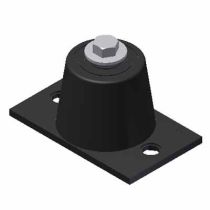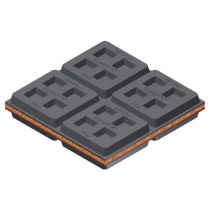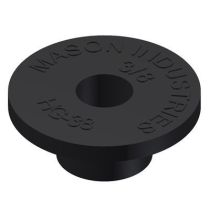
Mason Industries - Mounts and Pads
Mason Industries is konwn throughout our industry as one of the pioneers of the Vibration Isolation market. Through relentless product testing and development we are able to provide a reliable and time tested product that is backed by the Mason Industries brand.
Our Engineering department will work tirelessly to provide signed and sealed calculations along with layout drawings and specifications for any of your projects.
We offer our thanks to every contractor and manufacturer who forms our customer base. We believe they favor us because of the practicality of our designs and lower installed cost when product works the first time. We stand behind what we sell as no other competitor. We thank our whole representative organization for their hard work, professionalism, integrity and loyalty. We look forward to serving you. Diversified Fluid Controls is proud to be the exclusive representative for Mason Industries here in South Florida.

Rubber & Neoprene Mounts
Models: ND, M, RAA, RBA, RCA, RDA, BRBM, R, RC, RL, RCL, ML, MLS
Up until the 1950’s most rubber mountings were designed to take the load in shear. Mountings were circular or sold in long strips, so the capacity could be controlled by size and durometer, or durometer and the cut off length. Shear loading curves are straight line similar to steel springs. The deflection can be used directly in the frequency equation after dynamic stiffness correction. Unfortunately, shear mountings could and did fail because of bond failure between the rubber and metal. When overloaded, the mountings would bottom out. Compression mountings are less expensive for a given capacity and when overloaded, there is still a cushion. When loaded conservatively, the load deflection curve is similar to the straight line shear. The general configuration of our N mountings was known, but all mountings were manufactured as at the right and seldom taller than 1”. Both the base plate and the upper tapped washer were exposed and they corroded. As foolish as it seems now, we cemented a rubber pad to the baseplate to provide friction. Since greater efficiency can only be accomplished by increasing deflection, when double deflection was needed, two mountings were bolted together. This was another makeshift arrangement.

Neoprene and Rubber Pads
Models: SW, MSW, SUPER WSW, MBSW, WMSW, W, WFB, NI6, NI18, BBP, BBNR, HL, NK, SK
Up until the 1950’s most rubber mountings were designed to take the load in shear. Mountings were circular or sold in long strips, so the capacity could be controlled by size and durometer, or durometer and the cut off length. Shear loading curves are straight line similar to steel springs. The deflection can be used directly in the frequency equation after dynamic stiffness correction. Unfortunately, shear mountings could and did fail because of bond failure between the rubber and metal. When overloaded, the mountings would bottom out. Compression mountings are less expensive for a given capacity and when overloaded, there is still a cushion. When loaded conservatively, the load deflection curve is similar to the straight line shear. The general configuration of our N mountings was known, but all mountings were manufactured as at the right and seldom taller than 1”. Both the base plate and the upper tapped washer were exposed and they corroded. As foolish as it seems now, we cemented a rubber pad to the baseplate to provide friction. Since greater efficiency can only be accomplished by increasing deflection, when double deflection was needed, two mountings were bolted together. This was another makeshift arrangement.

Bushings
Models: HMIB, PB, HLB, HLW, HG
Up until the 1950’s most rubber mountings were designed to take the load in shear. Mountings were circular or sold in long strips, so the capacity could be controlled by size and durometer, or durometer and the cut off length. Shear loading curves are straight line similar to steel springs. The deflection can be used directly in the frequency equation after dynamic stiffness correction. Unfortunately, shear mountings could and did fail because of bond failure between the rubber and metal. When overloaded, the mountings would bottom out. Compression mountings are less expensive for a given capacity and when overloaded, there is still a cushion. When loaded conservatively, the load deflection curve is similar to the straight line shear. The general configuration of our N mountings was known, but all mountings were manufactured as at the right and seldom taller than 1”. Both the base plate and the upper tapped washer were exposed and they corroded. As foolish as it seems now, we cemented a rubber pad to the baseplate to provide friction. Since greater efficiency can only be accomplished by increasing deflection, when double deflection was needed, two mountings were bolted together. This was another makeshift arrangement.

Wedge Jacks
Models: WJ2, WJ3
Of all the leveling devices, Wedge Jacks provide the most rigid support after adjustment. All jacks have mating parts with spherical seats that allow automatic adjustment for up to 7° of transverse compensation for uneven floors. The wedges move readily in response to turning the adjustment bolts. Jacks are furnished without pads for leveling only or with 1/2″ 13mm thick oil resistant pads underneath to provide friction and vibration isolation. Economical two piece jacks have no provision for bolting. Equipment moves front to back during adjustment. Three piece jacks have a through hole for bolting and equipment moves only up and down during adjustment.